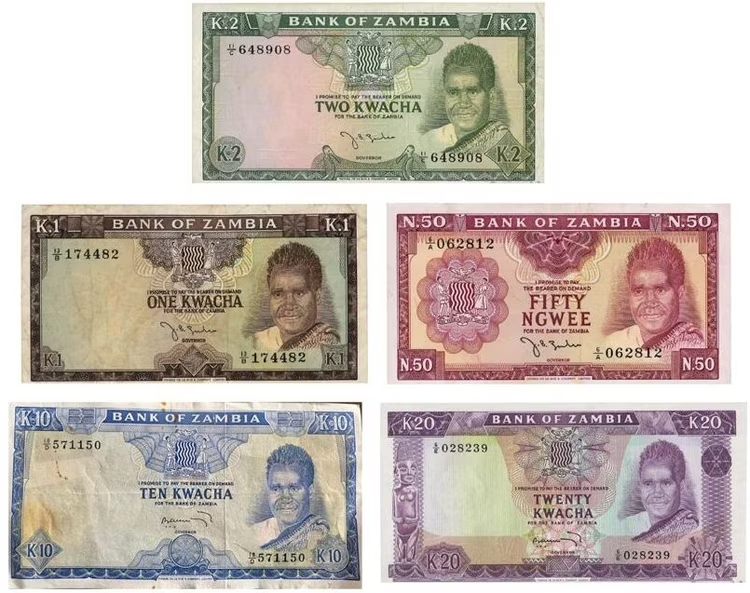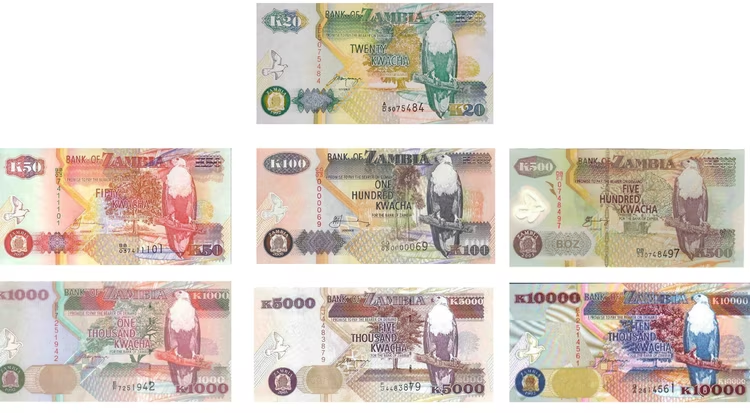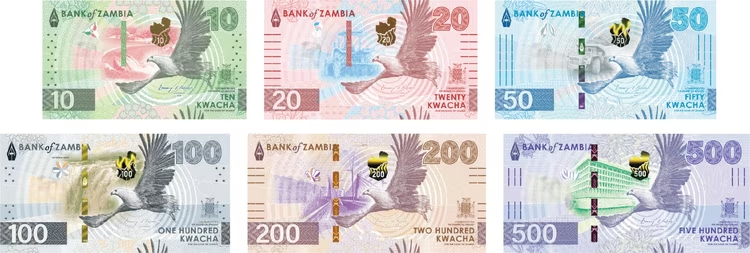The redesign enhances security, aids the visually impaired, and aligns with a broader shift toward digital payments. But what does this mean for inflation, tourism, and everyday transactions?
We all appreciate the crisp feel and sleek design of freshly printed money, neatly rectangular and satisfyingly new. You don’t want to fold it all the way, or want to purchase anything and only get back change that’s wrinkled with fading colours, some notes even come stapled together.
This won’t be an issue anytime soon, as Zambians are now receiving fresh, crisp banknotes following the Bank of Zambia’s release of the new currency on 31st March 2025 at Mulungushi International Conference Centre.
There have been questions as to why now and why the redesign. One can simply go to the Bank of Zambia website and find the many reasons, but what can be the other factor that would contribute to this redesign?
A Brief History On Zambia's Currency
Since it was first occupied by the British regime in the 19th century, Zambia moved from a barter system, trading in copper, bronze, and beads, to a monetary system implemented by the colonialists. Zambia's currency had been revised six times before the Kwacha came into use in 1968. The Kwacha itself has seen numerous reiterations since 1969, with various designs depicting different stages in the country's economic history.

- 1888 - 1940: British currency.
- 1920 - 1940: South African currency.
- 1940 -1956: Southern Rhodesia currency.
- 1956 - 1964: Rhodesia and Nyasaland currency.
- 1964 - 1968: Zambian Pound.
- 1968 - to date: Zambian Kwacha.
Why Did Zambia Redesign Its Currency?
According to Hon. Rodney Sikumba, MP, Minister of Tourism, "It has to do with tourism." Speaking at the introduction of the new currency, he stated, “Nature is present in the visual narrative of the notes, a canvas depicting the essence of a country, advertising the beauty of Zambia to the world."
Natural Wonders Featured in the Notes
Each note depicts the flying African Fish Eagle, the national bird of Zambia that soars high above the land, a symbol of freedom, strength, resilience and independence. The bird is only found in the southern parts of Africa, and anyone wanting to see it will have to make their way into any part of the southern countries, including the beautiful country of Zambia, to gaze upon its regal flight and proud stance upon the trees.
The theme of the new banknotes and coins, heritage series, highlights Zambia’s unique flora, with unique names such as the Bougainvillaea, Monadenium Mafingensis, Polystachya Mafingensis, Buchenera Hispida, Crabbea Zambiana and Criscianthus Zambiensis. Names are so rare, meaning they are not found in many places and are not widespread, making them very near-endemic to Zambia. Adding to these are the baobab, bukuyu, acacia and the Ing'ombe Ilede tree. These add a distinctive and fresh appearance to the banknotes. Adding to the flora is the fauna, from the majestic elephant and theregal lion, to the leopards, rhinos, and buffaloes that also feature on the notes, respectively. Zambia nurtures these magnificent creatures in its homeland, where anyone is free to come watch them in their natural habitats.

The reverse side of each banknote features one of Zambia's waterfalls at the centre. From the mighty Mosi-oa-Tunya “The Smoke that Thunders”, one of the seven wonders of the world, located in Livingstone, Southern province. Then the waterfalls in the Northern province, such as the Kalambo Falls, Lumangwe Falls, Chishimba Falls and Kabwelume Falls and finally in the Western Province, the Ngonye Falls. Hon. Rodney Sikumba stated that infrastructure is to be built close to these waterfalls so that they become easy to access, view and invest in. He also added that there needs to be protection of endangered animals such as the black rhinoceros, guarding them using the Zambian Wildlife Authority scouring the wild by land and air, jealously protecting these species, and educating the locals and youth on how to be mindful and cautiously coexist with them so that future generations will be able to see them.
Will the New Banknotes Cause Inflation?
There was worry in the air that an overhaul of currency design meant that inflation was bound. Since 2013, there hasn’t been a major overhaul of the design of the currency.
Andrew Chibuye, a country partner at PwC and an accomplished professional with extensive experience in economic analysis, financial management, and strategic planning, stated, “Printing new notes in any country is not unusual, it’s normal, new notes are printed all the time. When notes get damaged, they get taken out of circulation and are enhanced in features. That’s standard. The entire structure of the notes change is not unusual. The new currency is a way of making life simple for the everyday Zambian, from having a lot of notes to do something to now having a few notes doing the same thing.”
On the topic of inflation, many factors influence that in Zambia:
- Goods Importation - Zambia is known for being quite dependent on importing a wide variety of goods. e.g. when the price of a particular product you import goes up, the price in Kwacha goes up, and that becomes very inconvenient.
- Climate change - Droughts cause food shortages for rain-dependent regions that require rainfall for crop production, which leads to increased prices in the market.
- Energy Shortages - High water levels in the Kariba Dam and other reservoirs are essential for hydroelectric power generation. Without sufficient water, power shortages worsen, leading to prolonged load shedding nationwide. As a result, many businesses rely on generators to maintain operations, driving up their production expenses and, ultimately, the prices of goods for consumers.
Public Reaction to Zambia's Currency Redesign
When they were first introduced, there was praise from the public for the ease of transaction they would bring about, an example of that would be that instead of carrying ten one-hundred-kwacha notes to make a thousand, you would only need two five-hundred-kwacha notes to reach that.;
New Security Features:
- Watermarks - To deter counterfeiting by placing a recognisable image or pattern that is visible when held up to light, making it harder to replicate.
- Security threads - These are woven into the note and often include microprinting or glow under UV light.
- Colour-shifting elements - These features change colour when tilted, which is complex for counterfeiters to reproduce accurately.
People who counterfeit notes have become more sophisticated, so the technology of note printing has changed to ensure security. The tactile marks in the different designs are intended to assist the visually impaired in differentiating the various denominations. To further assist the visually impaired, the banknotes and coins are of different sizes.
Zambia Going Cashless
“Imagine losing a 500 kwacha note.” A joke that made its way through social media as the new notes were announced to have arrived.
The Bank of Zambia has stated that it’s campaigning for a cashless economy with their “Vision and Strategy 2023 – 2027 - To transform the national payment system to support the development of a 24/7 digital economy through interoperability, innovation, adoption of international standards and seamless processing of payments”. This means that cheques will be discontinued, and the SME sector has to have proper infrastructure for these e-payments and be digitally literate to benefit from them.
The public has been urged to avoid the risks of transacting with such large amounts of cash and make use of electronic payment. With the world moving further and further into the digital age, everyday Zambians will have to face the reality of using electronic payment to do their daily transactions of any sort.
The new notes are bringing in a new chapter of financing that can have a positive impact on the Zambian economy. You can say that Zambia is jumping on the e-payments bandwagon, given the way the world's waves of digital development are speeding forward.









